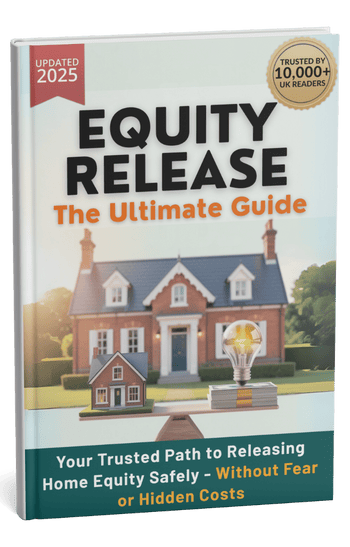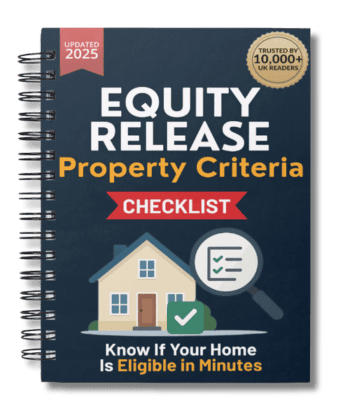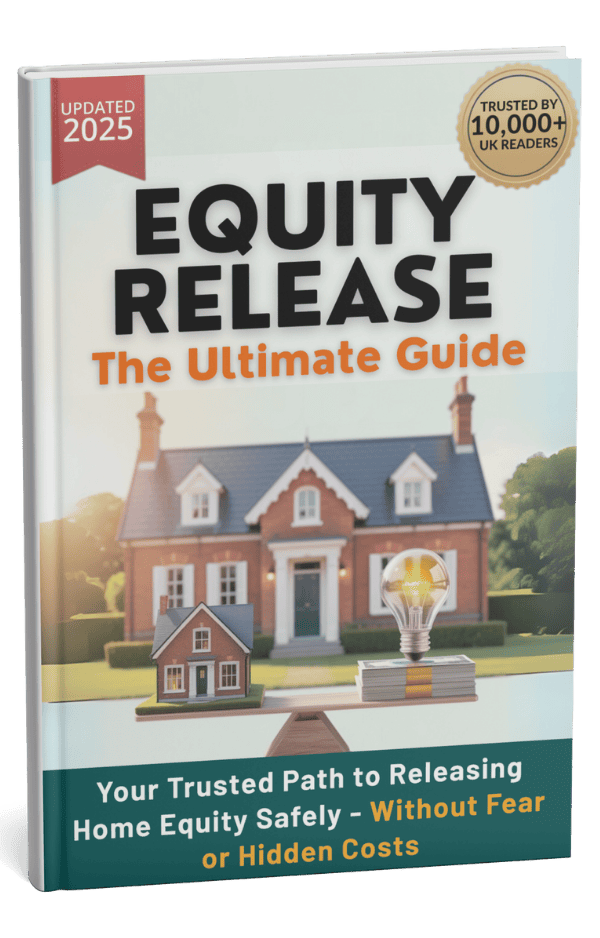
Key Insights into Home Reversion Mortgage Plans You Can't Miss in 2025
 Be aware. Equity release comes with drawbacks which are important to think about. Lifetime mortgages are secured loans. Compound interest means the amount you owe can grow quickly. Equity release reduces your estate's value and may impact means-tested benefits.
Be aware. Equity release comes with drawbacks which are important to think about. Lifetime mortgages are secured loans. Compound interest means the amount you owe can grow quickly. Equity release reduces your estate's value and may impact means-tested benefits.Key Takeaways...
- Home reversion plans provide tax-free cash with no repayments and lifelong tenancy.
- You sell a share of your home, usually at 20–60% of its value.
- The plan reduces your estate and inheritance for loved ones.
- Alternatives like lifetime mortgages or downsizing may offer more flexibility.
- Always use FCA-regulated providers and seek independent advice.
In 2025, home reversion schemes have been adapted to offer seniors a reliable way to access Unlocking the value of your home in retirement is a major financial decision.
Home reversion mortgage plans offer a unique way for homeowners, typically aged 60 and over, to access a lump sum or regular income by selling part or all of their property—while retaining the right to live there for life.
In 2025, these plans have evolved to include enhanced protections and flexible features, but they also come with important risks and trade-offs. This comprehensive guide will help you understand how home reversion works, who it suits, and how to compare your options for a secure retirement.
What Is a Home Reversion Mortgage Plan?
A home reversion plan is a type of equity release that allows you to sell a portion—or all—of your home to a provider in exchange for a tax-free lump sum or regular payments. You retain the right to live in your home, rent-free, for the rest of your life. Unlike a lifetime mortgage, you are not taking out a loan, so there is no interest to pay. Instead, you are selling a share of your property, usually at 20–60% of its market value, depending on your age and health.
For a detailed breakdown of costs and considerations, see our Equity Release Costs Checklist.

How Home Reversion Plans Work
When you enter a home reversion plan, the provider becomes the legal owner of the share you sell. You receive a lump sum or regular payments, and you can continue living in your home for life under a lifetime lease. The provider only receives their share of the sale proceeds when the property is sold, usually after you pass away or move into long-term care.
- No interest or monthly repayments: Since you’re selling equity, there’s no loan or interest to repay.
- Guaranteed lifetime tenancy: You can stay in your home for life, rent-free or with a fixed rent if agreed.
- Impact on inheritance: The share you sell will not benefit from future house price increases, and your estate will be reduced accordingly.
Home Reversion vs. Lifetime Mortgages
Home reversion and lifetime mortgages are the two main types of equity release in the UK. Here’s how they compare:
| Feature | Home Reversion Plan | Lifetime Mortgage |
|---|---|---|
| Ownership | Sell part/all of your home to provider | Retain full ownership |
| Interest | No interest charged | Interest accrues on loan |
| Repayments | None (unless rent agreed) | None during lifetime (unless you choose to repay) |
| Inheritance | Only retain share you still own | Can protect some equity for inheritance |
| Flexibility | Less flexible, hard to reverse | More flexible, can make repayments or drawdowns |
| Market Value | Receive less than market value for share sold | Loan based on property value, interest compounds |
For more on the differences, see our guide to Equity Release Types.

Eligibility and Application Process
To qualify for a home reversion plan in 2025, you typically need to:
- Be aged 60 or over (some providers require 65+)
- Own a UK property worth at least £80,000
- Have little or no mortgage remaining (any outstanding mortgage must be repaid from the proceeds)
- Ensure your property is in good condition and meets provider criteria
Application Steps:
- Consult with a qualified equity release adviser.
- Choose a provider and get a personalised quote.
- Undergo a property valuation.
- Complete legal paperwork and receive independent legal advice.
- Once approved, receive your lump sum or regular payments.
For a checklist of requirements, visit our SIPP Requirements Checklist.
Pros and Cons of Home Reversion
Before deciding, it’s crucial to weigh the advantages and disadvantages. Here’s a three-line introduction before the list:
Home reversion plans can provide financial flexibility in retirement, but they also involve significant trade-offs. Understanding both the benefits and drawbacks will help you make an informed decision. Consider your long-term goals and family needs before proceeding.

Pros:
- No monthly repayments or interest charges
- Guaranteed right to live in your home for life
- Access to a tax-free lump sum or regular income
- Can protect a share of your home for inheritance
- Not affected by future property value decreases on the sold share
Cons:
- Receive less than market value for the share sold
- Lose full or partial ownership of your home
- Reduces the value of your estate and inheritance
- May affect eligibility for means-tested benefits
- Difficult to reverse or buy back your share later
- Responsible for property maintenance and some costs
Financial and Emotional Considerations
Making the decision to sell part of your home can have both financial and emotional impacts. Here’s a three-line introduction before the list:
Beyond the numbers, home reversion plans can affect your sense of security, family relationships, and peace of mind. It’s important to consider how this choice aligns with your values and future plans. Discuss your intentions with loved ones and seek professional advice.
Key Considerations:
- Security of lifelong accommodation
- Relief from financial stress
- Concerns about leaving an inheritance
- Feelings of loss or reduced control
- Anxiety about future changes or moving
- Impact on family dynamics
Key Features and Rates in 2025
Home reversion plans in 2025 offer a range of features to suit different needs. Here’s a three-line introduction before the list:
Providers have adapted their offerings to include more flexible terms and enhanced protections. Understanding the key features and typical rates will help you compare your options. Always request personalised quotes and review the fine print.
Key Features:
- Sell between 20% and 100% of your home
- Receive 20–60% of the market value for the share sold (older applicants may get more)
- No interest or monthly repayments
- Lifetime tenancy guaranteed
- Option to sell more shares later
- Inheritance protection features available
For a current list of top-rated providers, see our Top 10 Equity Release Companies in the UK 2025 Review.
Top Home Reversion Providers
Choosing a reputable provider is essential for safety and value. Leading UK providers in 2025 include:
All reputable providers are regulated by the Financial Conduct Authority and are members of the Equity Release Council, ensuring consumer protections.
Alternatives to Home Reversion
Home reversion is not the only way to unlock equity in your home. Here’s a three-line introduction before the list:
Exploring alternatives can help you find the best fit for your financial goals and lifestyle. Each option has its own pros and cons, so compare carefully. Consult an adviser to discuss which route is right for you.
Alternatives:
- Lifetime mortgages (retain ownership, interest accrues)
- Downsizing to a smaller property
- Retirement interest-only (RIO) mortgages
- Using personal savings or investments
For more on alternatives, see our Equity Release Interest Rates and Best Equity Release Companies guides.
Legal, Regulatory, and Safety Protections
Home reversion plans are regulated by the Financial Conduct Authority (FCA) and must meet strict standards for consumer protection. Providers who are members of the Equity Release Council offer additional safeguards, such as:
- No negative equity guarantee
- Right to remain in your home for life
- Transparent terms and independent legal advice


Your Common Questions About Home Reversion Mortgages Answered
No, it suits those who prioritise lifelong accommodation and no repayments, but it reduces inheritance and is hard to reverse.
You can move, but the plan will end and the provider receives their share of the sale proceeds.
You retain only the share you have not sold; the provider owns the rest.
It depends on your age, health, property value, and the share sold—older applicants usually receive a higher percentage.
Yes, the lump sum or income can be used for any purpose, including care costs.
It reduces the value of your estate, as the provider receives their share when the property is sold.
It can be, for those who value security and no repayments, but alternatives may offer more flexibility or value.
Final Thoughts: Making Home Reversion Mortgages Work for You in 2025
Home reversion mortgage plans offer a unique way to access the wealth tied up in your home, providing financial flexibility and lifelong accommodation. However, they come with significant trade-offs, including reduced inheritance and loss of ownership. Always seek independent advice, compare all your options, and involve your family in the decision-making process.
For more on inheritance protection, see our guide on How Does Inheritance Protection Work with Equity Release?.
All details in this article were accurate as of July 2025. Rates, lending criteria, and eligibility rules may change over time. Please consult a financial adviser before making decisions based on this content.

Found an Error? Please report it here.





 100% private. No pressure. Just friendly guidance.
100% private. No pressure. Just friendly guidance.


